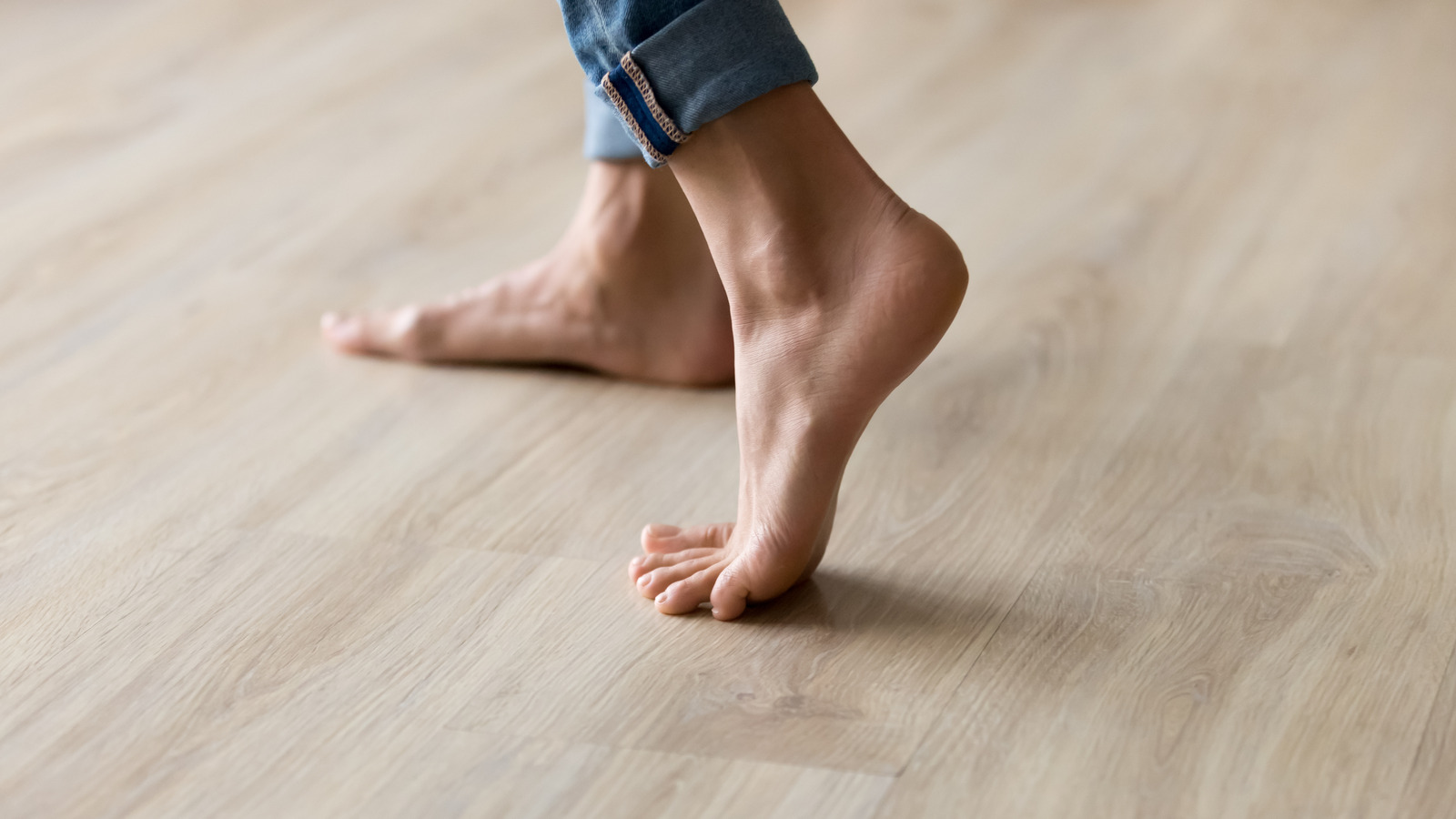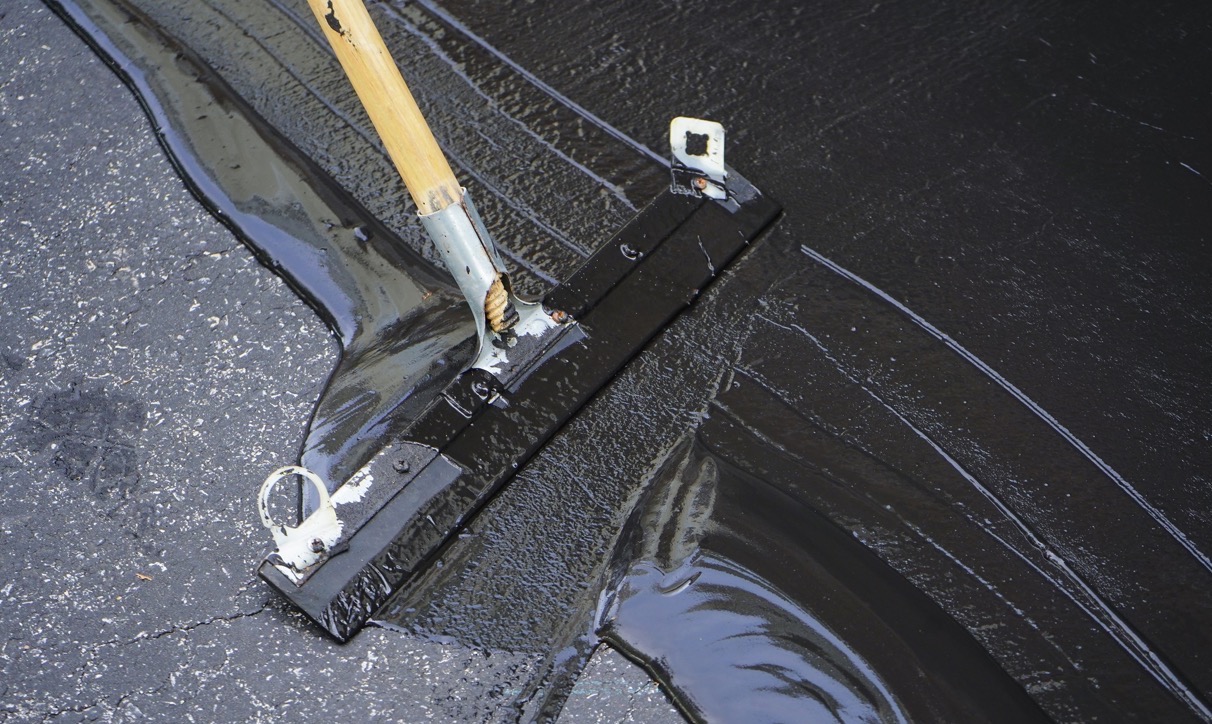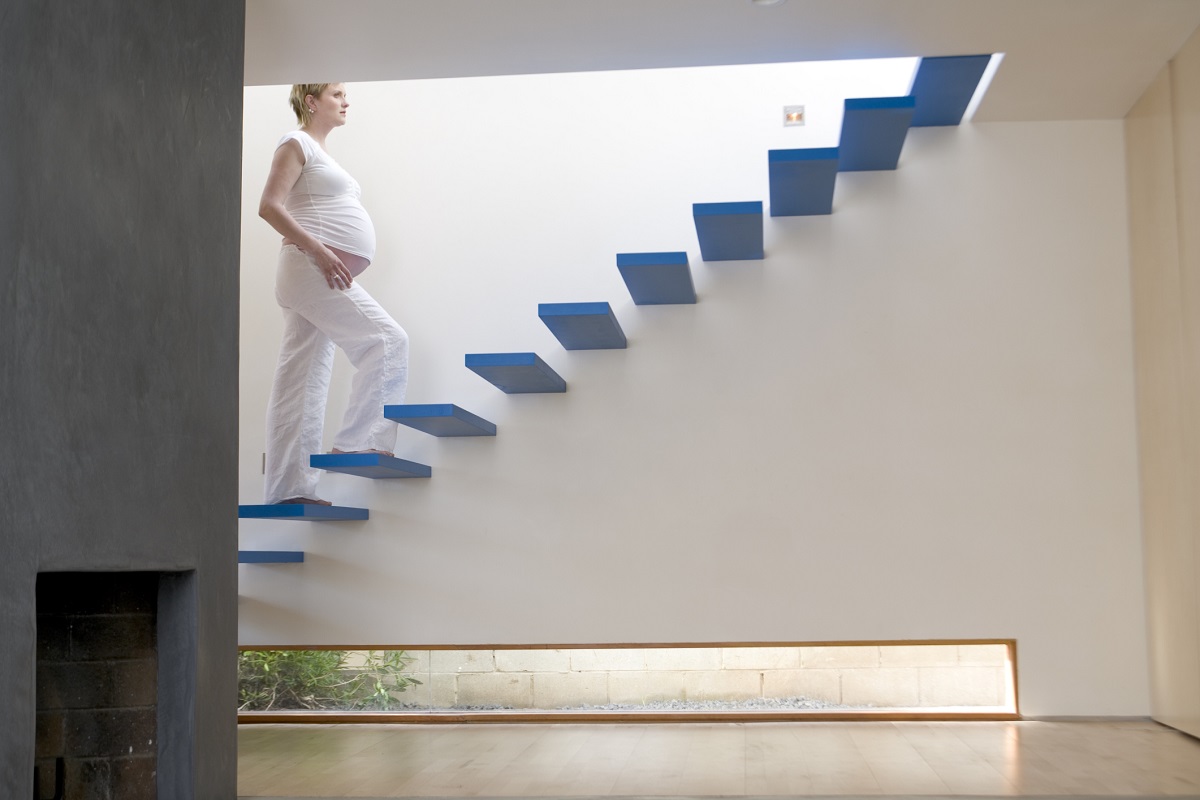

Articles
Floor Feels Bouncy When I Walk
Modified: December 7, 2023
Find helpful articles and tips on how to fix your bouncy floor when you walk. Discover effective solutions and expert advice to ensure a stable and firm surface.
(Many of the links in this article redirect to a specific reviewed product. Your purchase of these products through affiliate links helps to generate commission for Storables.com, at no extra cost. Learn more)
Introduction
Have you ever experienced the disconcerting sensation of your floor feeling bouncy when you walk on it? It can be quite unnerving and may even raise concerns about the structural integrity of your home. Understanding the underlying causes of a bouncy floor is crucial in order to address the issue effectively.
When a floor feels bouncy, it often indicates a problem with the floor’s support system, which can be attributed to various factors such as structural issues, foundation problems, or subfloor damage. Identifying the root cause of the problem is essential to determine the appropriate solution.
In this article, we will delve into the possible causes behind a bouncy floor and explore potential solutions to rectify the issue. Whether you are a homeowner or a contractor, the information provided here will help you understand the complexities involved and guide you towards resolving the problem effectively.
Key Takeaways:
- Addressing a bouncy floor requires evaluating structural, foundation, and subfloor issues. Professional assistance is crucial for implementing effective solutions and restoring stability to ensure a safe and secure home environment.
- Reinforcing the floor, repairing the foundation, and fixing subfloor problems are essential steps to eliminate the bouncy sensation. Seeking expert guidance and prompt action are vital for long-term stability and peace of mind.
Read more: How To Clean Walk In Freezer Floor
Evaluating the Issue
Before determining the cause of a bouncy floor, it is crucial to evaluate the extent and severity of the problem. Here are a few key aspects to consider:
- Location: Determine if the floor feels bouncy throughout the entire house or is localized to specific areas.
- Observation: Pay attention to any visible signs of sagging or movement when walking on the floor. Note any creaking or cracking sounds that accompany the bouncing sensation.
- Timeframe: Assess how long the floor has been bouncy and whether the issue has worsened over time or remained consistent.
- Recent Changes: Consider if any recent changes or renovations have been made to the house, such as the installation of heavy furniture or appliances.
- Usage: Take into account the frequency and weight load on the floor, especially in areas with high foot traffic or the presence of heavy objects.
By evaluating these factors, you can gather valuable information that will assist in identifying the root cause of the bouncy floor and guide your decision-making process when it comes to addressing the issue.
Possible Causes
A bouncy floor can be caused by a variety of factors, ranging from minor issues to more serious structural problems. Here are the possible causes to consider:
1. Structural Issues:
Poorly designed or weak structural support systems can lead to floor deflection, resulting in a bouncy feel. This could be due to undersized beams, improper spacing of floor joists, or insufficient bracing.
2. Foundation Issues:
A bouncy floor may also be a symptom of underlying foundation problems. Shifting or settling of the foundation can cause the floor to become uneven and unstable. This is particularly common in older homes or those built on unstable soil.
Read more: When To Walk On New Grass
3. Subfloor Problems:
Deterioration or damage to the subfloor can contribute to a bouncy floor. Water damage, termite infestations, or structural weaknesses in the subfloor can result in decreased stability and resilience.
4. Improper Floor Installation:
If the floor was not properly installed or if shortcuts were taken during the installation process, it can lead to an unstable and bouncy floor. Insufficient nailing, inadequate subfloor preparation, or using the wrong type of materials can all contribute to the problem.
5. Excessive Floor Joist Spans:
If the distance between floor joists exceeds recommended standards, it can cause the floor to sag and feel bouncy. This issue is commonly found in older homes where outdated construction practices were followed.
Identifying the specific cause of the bouncy floor is crucial in order to implement the most suitable solution. In the following sections, we will explore potential remedies for each possible cause, ranging from reinforcing the floor to repairing the foundation or subfloor.
Structural Issues
One potential cause of a bouncy floor is structural issues within the support system of your home. These issues can stem from several factors, including undersized beams, improper spacing of floor joists, or insufficient bracing. Addressing these structural issues is essential for restoring stability to your floor.
Read more: Why Does My Floor Feel Sticky After I Mop
Undersized Beams:
If the beams supporting your floor are not properly sized to handle the load, they may deflect under the weight, leading to a bouncy floor. This issue is more common in older homes where outdated construction practices were followed. To address this, consulting with a structural engineer is recommended. They can assess the load requirements and recommend appropriate modifications, such as adding additional beams or reinforcing existing ones.
Improper Spacing of Floor Joists:
The spacing of floor joists plays a crucial role in the structural integrity of your floor. If the spacing is too wide, the floor may experience excessive deflection and feel bouncy. In such cases, adding additional joists between the existing ones can help distribute the load more effectively and reduce the bounciness. A professional contractor or structural engineer can guide you in determining the appropriate spacing and placement of additional joists.
Insufficient Bracing:
Proper bracing is essential for maintaining the stability of the floor. Inadequate bracing can result in excessive movement, causing the floor to feel bouncy. Adding additional bracing, such as cross-bracing or diagonal bracing, can help strengthen the floor system and reduce deflection. A structural engineer can assess your home’s bracing system and recommend the necessary modifications.
When it comes to addressing structural issues, it is crucial to consult with professionals who specialize in structural engineering or construction. They have the expertise to evaluate the specific issues in your home and provide appropriate solutions to reinforce the support system, ensuring a stable and solid floor.
Foundation Issues
A bouncy floor can also be a symptom of underlying foundation problems. Issues with the foundation can cause the floor to become uneven, resulting in a bouncy and unstable feeling. Addressing these foundation issues is crucial to restore stability to your floor.
Read more: When To Walk On Grass Seed
Shifting or Settling Foundation:
A shifting or settling foundation can lead to an uneven floor, causing it to feel bouncy. This is often observed in older homes or those built on unstable soil. Common causes of foundation shifting or settling include changes in moisture levels, poor drainage, and inadequate soil compaction during construction. Seeking the assistance of a professional foundation contractor or structural engineer is crucial to properly assess the extent of the foundation issues and implement appropriate solutions.
Foundation Crack:
A crack in the foundation can compromise its integrity, resulting in an unstable floor. These cracks can be caused by various factors, such as soil movement, water pressure, or structural stress. It is essential to have a qualified professional inspect the foundation and determine the appropriate method for repairing the crack. This may involve filling the crack with epoxy or using carbon fiber strips to reinforce the foundation.
Foundation Underpinning:
In some cases, foundation underpinning may be necessary to address significant foundation issues that are causing a bouncy floor. This process involves strengthening the foundation by extending existing footings or adding new support structures, such as helical piers or steel beams. Foundation underpinning should only be performed by experienced professionals who specialize in foundation repair.
When dealing with foundation issues, it is crucial to consult with professionals who specialize in foundation repair and have the expertise to accurately assess the problem and provide effective solutions. They will be able to recommend the most suitable course of action to stabilize your foundation and eliminate the bouncy sensation in your floor.
Subfloor Problems
Deterioration or damage to the subfloor can contribute to a bouncy floor. The subfloor is a crucial component of the flooring system, providing support and stability. Identifying and addressing subfloor problems is essential for restoring the integrity of your floor.
Read more: Why Does Lying On The Floor Feel Good
Water Damage:
Excessive moisture or water damage can weaken the subfloor, causing it to lose its structural strength and become unstable. This can occur due to leaks, floods, or plumbing issues. If you suspect water damage in your subfloor, it is vital to address the source of the water and repair any leaks or drainage issues. The affected subfloor may need to be replaced or reinforced, depending on the extent of the damage.
Structural Weaknesses:
The subfloor should be structurally sound to provide stability to the floor above it. Structural weaknesses, such as rot, termite damage, or inadequate construction, can lead to a bouncy floor. Inspecting the subfloor for any signs of deterioration or insect damage is crucial. If structural weaknesses are found, replacing the damaged sections of the subfloor or reinforcing them with additional support may be necessary.
Subfloor Material and Thickness:
The type and thickness of the subfloor material can impact its ability to provide sufficient support. Inadequate subfloor material or thickness can result in a bouncy floor. For example, subfloors composed of particleboard or plywood with an insufficient thickness may not have the necessary strength to withstand the load and movement. Upgrading to a stronger material, such as oriented strand board (OSB) or plywood with the appropriate thickness, may be necessary to improve the stability of the floor.
If you suspect subfloor problems are causing the bouncy sensation in your floor, it is advisable to consult with a professional contractor or flooring specialist. They will be able to assess the condition of the subfloor, determine the extent of the damage, and recommend the most suitable solutions to repair or reinforce the subfloor and eliminate the bounciness.
Solutions
When faced with a bouncy floor, it is essential to identify the underlying cause in order to implement the appropriate solution. The following are potential remedies based on the possible causes we discussed earlier.
Read more: Dizzy When Walking Up Stairs
Reinforcing the Floor:
If the bouncy floor is due to structural issues, reinforcing the floor can help restore stability. This may involve adding additional beams, joists, or bracing to strengthen the support system. Consulting with a professional contractor or structural engineer is crucial to accurately assess the structural deficiencies and determine the most effective reinforcement methods.
Repairing the Foundation:
If the cause of the bouncy floor is foundation problems, addressing the foundation issues is essential. This may involve underpinning the foundation, filling cracks, or addressing drainage and moisture problems. Hiring a professional foundation contractor or structural engineer is recommended to properly assess and repair the foundation to stabilize the floor.
Fixing the Subfloor:
If subfloor problems are the source of the bouncy floor, repairing or replacing the subfloor may be necessary. This can involve addressing water damage, reinforcing structurally weak areas, or upgrading to a stronger subfloor material. Consulting with a professional contractor or flooring specialist is advisable to accurately assess the condition of the subfloor and determine the appropriate repair or replacement methods.
It’s important to note that these solutions may require the assistance of experienced professionals, such as contractors, structural engineers, or foundation specialists. They have the expertise and knowledge to properly evaluate the issue and implement the necessary repairs or improvements, ensuring a stable and solid floor.
Remember, addressing a bouncy floor promptly is crucial to prevent further damage and ensure the safety and stability of your home. Don’t hesitate to seek professional guidance to tackle the problem effectively.
Reinforcing the Floor
If your floor feels bouncy due to structural issues, reinforcing the floor can help restore stability and eliminate the bouncy sensation. Here are some potential methods for reinforcing the floor:
Adding Additional Beams:
If the existing beams are undersized or spaced too far apart, adding additional beams can help distribute the load more effectively and reduce deflection. Consult with a professional contractor or structural engineer to determine the appropriate size and placement of the additional beams.
Installing Additional Joists:
In some cases, the spacing between the existing floor joists may be too wide, leading to excessive deflection. Installing additional joists between the existing ones can strengthen the floor system and reduce bouncing. A professional contractor or structural engineer can guide you in determining the suitable spacing and placement of the additional joists.
Reinforcing Bracing:
Inadequate bracing can contribute to floor movement and a bouncy feel. Adding or strengthening the bracing system, such as cross-bracing or diagonal bracing, can help improve the floor’s stability. Consult with a professional who specializes in structural engineering or construction to identify the appropriate bracing method for your specific floor design.
Upgrading Floor Support Components:
Depending on the extent of the structural issues, upgrading the floor support components may be necessary. This could involve replacing undersized or weak beams with stronger ones, using engineered lumber for increased strength, or reinforcing the existing components with steel plates or brackets. Consulting with a professional will ensure that the upgrades are implemented correctly and effectively.
When reinforcing the floor, it is crucial to work with experienced professionals who specialize in structural engineering or construction. They will accurately assess the structural deficiencies in your home and recommend the most appropriate methods for reinforcing the floor and eliminating the bouncy sensation.
Reinforcing the floor not only restores stability but also enhances the overall safety and durability of your home. Don’t hesitate to seek professional guidance to ensure that the floor is properly reinforced using the most suitable methods for your specific situation.
Read more: Knees Crack When Walking Up Stairs
Repairing the Foundation
If your floor feels bouncy due to foundation issues, addressing and repairing the foundation is crucial to restore stability and eliminate the bouncy sensation. Here are some potential methods for repairing the foundation:
Underpinning:
Foundation underpinning is a common method used to stabilize and strengthen the foundation. It involves extending existing footings or adding new support structures, such as helical piers or steel beams, to enhance the foundation’s load-bearing capacity. Underpinning should be done by experienced professionals who specialize in foundation repair to ensure proper installation and long-term stability.
Crack Repair:
If there are visible cracks in your foundation, addressing them is essential to prevent further movement and potential structural issues. Depending on the severity and type of crack, various techniques can be utilized, such as epoxy injection, carbon fiber reinforcement, or hydraulic cement. Consulting with a professional foundation contractor will help determine the most suitable method for repairing the cracks.
Addressing Drainage Issues:
Poor drainage around the foundation can contribute to shifting and settling, leading to an uneven and bouncy floor. Evaluating and improving the grading, installing foundation drains, or directing downspouts away from the foundation can help redirect water and prevent excessive moisture around the foundation. Consulting with a professional landscaper or drainage specialist can provide valuable insight into resolving drainage issues.
Soil Stabilization:
In some cases, soil movement or instability can contribute to foundation issues. Soil stabilization techniques, such as chemical grouting or soil compaction, can help enhance the soil’s load-bearing capacity and reduce shifting. A professional geotechnical engineer can assess the soil conditions and recommend the most appropriate soil stabilization methods for your specific situation.
Repairing the foundation is a complex task that requires expertise and knowledge in foundation repair techniques. It is crucial to consult with experienced professionals, such as foundation contractors or structural engineers, who can accurately diagnose the foundation issues and recommend suitable repair methods.
By addressing and repairing the foundation, you can not only eliminate the bouncy sensation in your floor but also ensure the long-term stability and structural integrity of your home.
Fixing the Subfloor
If your floor feels bouncy due to subfloor problems, addressing and fixing these issues is crucial to restore stability and eliminate the bouncy sensation. Here are some potential methods for fixing the subfloor:
Repairing Water Damage:
If the subfloor has been compromised by water damage, it is important to address the underlying cause of the moisture and repair the damaged areas. This may involve drying out the subfloor, replacing affected sections, and addressing any issues with plumbing or leaks. Consulting with a professional contractor or water damage specialist can help identify the extent of the damage and determine the appropriate repair methods.
Reinforcing Structurally Weak Areas:
If certain areas of the subfloor are structurally weak or damaged, reinforcement may be necessary to improve stability. This can involve adding additional support beams or sistering joists to strengthen weak areas. A professional contractor or structural engineer can assess the condition of the subfloor and recommend the most suitable reinforcement methods.
Read more: When To Walk Away After A Home Inspection
Upgrading Subfloor Material:
In some cases, the subfloor material may be inadequate or not suitable for providing sufficient support. Upgrading to a stronger and more durable subfloor material, such as oriented strand board (OSB) or plywood, can help improve stability and reduce the bounciness. Consulting with a professional contractor or flooring specialist can help determine the most appropriate subfloor material for your specific needs.
Ensuring Proper Installation:
If the bouncy floor is the result of improper installation of the subfloor, it may be necessary to address any installation errors. This can involve correctly fastening the subfloor to the joists, ensuring proper spacing and alignment, and using the appropriate fasteners. Consulting with a professional contractor or builder can provide insights into proper subfloor installation techniques.
Fixing the subfloor requires expertise in construction and flooring systems. It is advisable to work with experienced professionals who can accurately assess the subfloor issues and implement the appropriate repairs or upgrades. By addressing and fixing the subfloor, you can restore stability and create a solid foundation for your floor, eliminating the bouncy sensation.
Conclusion
A floor that feels bouncy when you walk on it can be a cause for concern and indicate underlying issues with the structural integrity of your home. However, by understanding the possible causes and implementing the appropriate solutions, you can restore stability and eliminate the bouncy sensation.
Throughout this article, we have explored the various factors that can contribute to a bouncy floor, including structural issues, foundation problems, and subfloor damage. Evaluating the issue and determining the specific cause is crucial in order to implement the most suitable solution.
For structural issues, reinforcing the floor through methods such as adding additional beams or joists, or improving bracing, can help restore stability and eliminate the bouncy feel. If the problem lies within the foundation, repairing the foundation through underpinning, crack repair, or addressing drainage issues is essential. In the case of subfloor problems, fixing water damage, reinforcing weak areas, upgrading the subfloor material, and ensuring proper installation can all contribute to a stable floor.
It is important to note that addressing these issues requires expertise and professional assistance. Consulting with contractors, structural engineers, or foundation specialists is recommended to accurately assess the problem and implement effective solutions.
By taking the necessary steps to eliminate the bouncy sensation in your floor, you not only restore stability but also ensure the safety and longevity of your home. Preserve the structural integrity of your floor and enjoy a solid and stable walking surface by addressing any issues promptly and with the appropriate solutions.
Remember, maintaining a stable and secure floor is essential for a comfortable living environment, so don’t hesitate to seek professional guidance when needed. By doing so, you can enjoy peace of mind and the satisfaction of a strong and stable floor for years to come.
Frequently Asked Questions about Floor Feels Bouncy When I Walk
Was this page helpful?
At Storables.com, we guarantee accurate and reliable information. Our content, validated by Expert Board Contributors, is crafted following stringent Editorial Policies. We're committed to providing you with well-researched, expert-backed insights for all your informational needs.







0 thoughts on “Floor Feels Bouncy When I Walk”